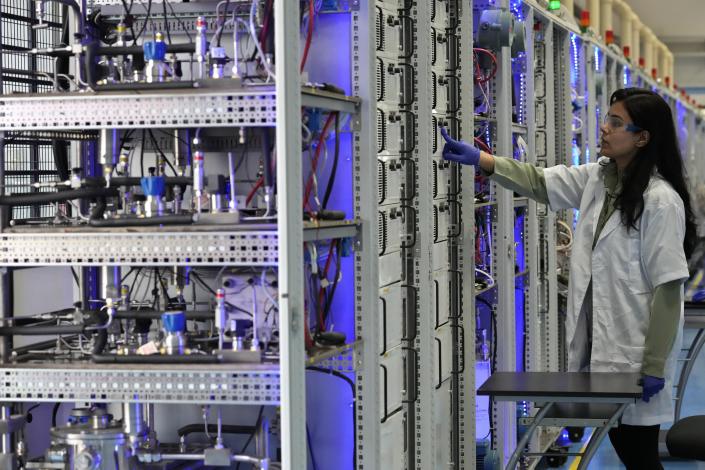Ohmium startup raises $250m to boost production of clean hydrogen electrolyzers
Ohmium, a Silicon Valley-based company, has raised $250 million to expand the production of machines that generate clean hydrogen and replace fossil fuels. According to some climate experts, using hydrogen as an alternative to coal, oil, or gas, such as in making steel or cement, can help address climate change without causing further damage. While this was mostly a theoretical idea, real-world examples are emerging.
Daryl Wilson, the executive director of the Hydrogen Council, said that four or five years ago, it would have been impossible for a clean hydrogen company to raise hundreds of millions of dollars, but the growing demand for hydrogen and broader recognition of its importance in addressing climate change has led to rapid growth. Capgemini, a consulting firm, found in its recent research that 64% of energy and utility firms plan to invest in low-carbon hydrogen efforts by 2030.
Ohmium’s role is to produce electrolyzers, devices that break down water into hydrogen and oxygen. CEO Arne Ballantine said the $250 million would be used to increase production at the plant in Chikkaballapur, India, reduce production costs at the California headquarters, and increase its workforce of 400 employees. Ballantine intends to produce enough electrolyzers each year to supply 2 gigawatts’ worth of hydrogen, which is sufficient for a few steel or fertilizer plants or multiple refineries.
Heavy manufacturing is setting ambitious goals to reduce carbon dioxide emissions using hydrogen, and there are plans to use hydrogen in power generation and transportation. The United States, European Union, Canada, and India are providing tax credits and incentives for clean or green hydrogen. According to the International Energy Agency, the world’s demand for hydrogen reached 94 million tons in 2021, and 200 million tons will be required by 2030 to achieve net-zero emissions by 2050.
An electrolyzer generates clean hydrogen if it uses electricity from a grid powered by renewable energy, such as wind and solar. Ballantine claims that Ohmium customers are exclusively focused on this technique. Currently, less than 1% of the world’s hydrogen is produced using renewable energy. Emily Kent, the U.S. director for zero-carbon fuels at the Clean Air Task Force, believes that meeting the demand for low-emissions hydrogen will require a significant increase in electrolyzer production and zero-carbon electricity. This is due to the substantial amount of electricity required to operate the electrolyzers.
Most hydrogen is produced from natural gas, which emits greenhouse gases when extracted from the ground and when transported via pipelines. Companies use more fossil fuels to generate steam to crack hydrogen from natural gas, releasing additional planet-warming greenhouse gases unless carbon capture technology is used. This traditional method does not require an electrolyzer, and the hydrogen is mostly utilized in the refining and chemical industries.
Ohmium’s “Lotus” electrolyzer may be used as a partial substitute for natural gas in some US power plants. Ohmium is also working on green hydrogen projects with Spanish energy firm Cepsa and renewable energy developer Amp Energy India. It recently announced that an electrolyzer would be delivered to a liquefied natural gas import terminal in Andalusia, Spain. Each electrolyzer can produce up to 50 tons of hydrogen per year, costs a few hundred thousand dollars, and comes in an 8 feet high by 5 feet wide by 6 feet long cabinet. They can be interconnected and modular, as needed.
Ballantine admits that it can be difficult to grasp precisely what hydrogen gas is and how it can assist in reducing climate change. However, if he demonstrates to someone a piece of steel and claims that it was produced with far fewer greenhouse gas emissions by burning hydrogen created from water instead of burning coal to heat it up, then they will comprehend it.
